The age-old phrase ‘No pain, no gain’ certainly holds true with automotive diagnostics. This is perhaps even more true with BMW diagnostics. For the uninitiated, Bavarian circuit design and module testing can be a difficult proposition.
This was my experience with the following two cars. I had only recently transitioned from a flat-rate heavy line technician to focus primarily on diagnostics and electrical repairs. The Picoscope and training I had purchased from AutoNerdz was helping me grow, but in many ways, I was still green. I was not ready for these two vehicles, but they forced me to learn and gave me valuable experience to draw from.
Tale One – BSD Gone Bad
One Monday morning in late May I arrived at work to find a Monaco Blue Metallic BMW 535i waiting in the shop’s parking lot. I could tell by the way it was parked that a tow truck had dropped the vehicle off sometime over the weekend.
We started our morning as usual, pulling cars out and cleaning up the shop from a busy Friday the week before. After the weekend drop offs had been checked in, the BMW was dispatched to me for an electrical diagnosis. I looked over the vehicle details for the 2010 E60. It was equipped with the N54 3.0 L turbocharged engine, an automatic transmission, and had 112K miles on the odometer. The vehicle’s owner had written a note when she dropped of the vehicle, which read as follows:
“Good morning!!!! I dropped my car off last night and I wanted to make a few notes about what has happened in the last couple days. Yesterday when I went out to my car I couldn’t unlock it and the battery was dead, so I ran out and bought a top notch new battery and replaced it… but it didn’t work…it was not the problem. I know now something is drawing the power from the battery. So, I’ve been disconnecting and reconnecting the battery if I need to move the car so it won’t drain my battery again.
“Last night when the tow truck driver came, I needed to manually put the car in Neutral to move it, which required taking off the cover around the shift knob. So my car can not be connected to the battery until the electrical issue is solved and moving the car is hit and miss. Sometimes the shifter will go into Reverse or Drive and sometimes the shift lever is just stuck in Park. Please help!!“
Grabbing the key from the key rack, I headed out into the parking lot. I opened the trunk and connected the battery. The first thing I noticed after sitting down in the driver’s seat was that the map light was switched on.
With my foot on the brake, I pushed the Start button and the engine fired up. Initially there were no warning lights displayed and the vehicle seemed to be operating normally. Wondering if the issues on this vehicle could simply be from the map light being left on and draining the battery, I moved the gear selector into Drive and pulled into the service bay. With the engine still running I popped the trunk and connected a volt meter to the battery terminals. The display read 12.2 volts. Clearly the charging system was not operating correctly, but there was no Battery Warning message displayed.
With a battery maintainer connected to the underhood jump locations, I ran a full scan of the vehicle with an aftermarket scan tool. The scan listed a total of 64 fault codes across 27 modules. The majority of the faults were in the DME or engine control unit. They included component faults for the intelligent battery sensor, alternator, and the electric coolant pump among others. There was also a Bit Serial Data (BSD) Interface fault.
The client’s initial notes were detailed, but I felt like there was more to the story of this 5 series. I called the owner of the vehicle, and she did reveal several more details to the timeline.
The vehicle had gone into limp mode a few days before the dead battery. All the dash warning lights had illuminated, and multiple warning messages were displayed, including Trans Malfunction, Low Battery, and Engine Overheating. She had stopped at an auto parts store close to her home to have the codes read, but they were not able to help her at all and recommended she bring her vehicle to our garage. The vehicle sat at her house until the day before, when the battery was dead, and the vehicle was towed to our shop.
After talking with the owner of the BMW and looking at the scan results, it was clear there was a lot more going on here than just a dead battery. Most of the engine controller faults were new to me; dealing with systems I was not familiar with, especially the Bit Serial Data Interface fault. I assumed it was a communication fault, but I did not know what it was referring to specifically. At this point I had to admit I was in the deep end of the pool with this car, so I started poring through service information to try and even the scales.
I reviewed the code descriptions and setting criteria for all the faults in the DME, and I studied the charging system operation as well as the Bit Serial Data communication bus. The Bit Serial Data interface, or BSD for short, allows components and sensors to be controlled by, and relay data to, the DME.
I learned that most of the components with faults logged on the code scan used the BSD bus to communicate with each other and the DME. I also read that it can take
60–90 seconds for a battery warning message to be displayed when the alternator stops charging, due to normal BSD network operation. This information explained why there was no battery light on when I pulled the vehicle into the shop. Furthermore, I discovered that if there were any communication issues with the BSD interface the alternator would default to a set charging voltage around 14 volts. This information suggested that the alternator on this BMW had failed.
There were too many faults to try and tackle at the same time, so I cleared the faults and rescanned the vehicle. This time, using BMW’s diagnostic software, ISTA. I was fortunate to work at a shop that had invested heavily in OE scan tools and software.
After the code clear and rescan, there were only two faults left in the DME, and only one of them was actively present.
The 2E7C Bit Serial Data interface, or BSD data bus communication fault, was the only active code. The intelligent battery sensor, alternator, and the electric coolant pump all shared the BSD communication bus along with the oil condition sensor and the DME. This made sense that if no communication was possible on the BSD, then there would be communication faults with all of these components.
I began testing by accessing the DME inside the E-box near the passenger side firewall. With a lab scope connected to the violet BSD wire at the DME connector I monitored the signal voltage. There was a reading of 0 volts on the wire with almost no discernible activity. When the driver’s door was opened there was a momentary spike and when the ignition was turned on there was some ‘noise’ in the circuit.
The next step was to disconnect each component on the data bus looking for a change in the signal. First we checked the intelligent battery sensor on the negative battery terminal in the trunk. This was followed by checking the single wire alternator connector, electric coolant pump, and the oil condition sensor. With all the components unplugged there was still no activity on the BSD wire.
All of this added up to a failed DME. The DME is the master module for the BSD network and should supply 12 volts on the BSD wire to the other components. My service writer priced up a new DME, alternator, and intelligent battery sensor just to be safe. The owner approved the repairs with the understanding that I could not verify correct operation of the electric coolant pump or the oil condition sensor until the repairs were completed.
The parts were ordered and a few days later, when they all they were delivered, I installed them on the vehicle. The new DME was programmed with ISTA-P along with several other modules which needed an updated programming level.
With fear and trembling I turned the ignition on. Much to my relief, Channel A of PicoScope showed 12 volts, indicating that the Bit Serial Network was alive and well. The engine started and ran, and the volt meter on the battery terminals now read 13.6 volts. After two road tests with multiple key cycles in between there were no faults in the DME, and all the readiness monitors had run and passed.
In the end it required a new DME, new alternator, new intelligent battery sensor, and a lot of learning on my part to get this vehicle back on the road again. I was still unsure what caused the DME and the alternator to fail in the first place, or which component failed first. After the owner had paid for and picked up the 5-series, I continued researching and came across a Technical Bulletin that referenced the 2ACB DME master relay activation fault from the second fault scan with ISTA.
The document identified a defective diode in the DME as the root cause of the fault code. The technical bulletin was for a slightly older E60 model year however, so it may not have been applicable. The original cause of this vehicle’s failures may never be known, but the knowledge I gained was well worth the pain of struggling through the diagnosis.
Tale Two – Fooled by LIN
December brought the first snow flurries of winter and an ailing 3-Series into the shop. Despite the cold weather, this BMW had an overheating concern. The owner of the 2014 328i had been driving on the freeway when there was an overheat message displayed in the information center and the Check Engine light turned on. He quickly got off the freeway, shut the engine off and arranged to have the car towed to the nearest shop.
The cooling fan turned on shortly after starting the BMW’s engine and pulling into the shop, so I was not concerned with the fan operation as a cause of the overheating. A visual inspection of the cooling system revealed coolant stains around the expansion tank. The coolant level was low in the expansion tank as well. I filled the tank to the correct level and pressure tested the system. The pressure gauge held steady at 16 psi for 10 minutes, so I did not suspect a leak in the system. The low coolant level and staining were consistent with an engine that overheated and boiled out of the expansion tank cap.
A full vehicle scan was run with BMW’s Integrated Service Technical Application, or ISTA scan tool software. There were several voltage and lighting faults, and one fault for the electric coolant pump.
The fault was a CD9010 LIN Message; Electric Coolant Pump: Missing. This was a new fault code for me that I had not run across yet. I had replaced many coolant pumps on 3 and 5-Series BMWs though, and was familiar with the 377A Engine Cooling System fault for the Coolant Pump Switched Off Due To Blockage. At this point in the diagnosis I made my first mistake. I began to make an assumption about the coolant pump having failed; an assumption that would influence the rest of my testing and would ultimately prove incorrect.
With the vehicle on the lift and the plastic under trays removed, the electric coolant pump was inspected next. The coolant pump was wet with oil from several leaks on the engine and appeared to be the original part for the car. My assumptions about this vehicle needing a new coolant pump grew after seeing the condition of the old pump. I knew that I still needed to confirm power and ground and communication to the pump though.
I connected PicoScope to the power, ground, and communication wires to the coolant pump. The power and ground circuits both tested good. On the communication wire I found that there was activity when the coolant pump connector was disconnected, but once the connector was plugged back in all activity stopped. This is where I made my second mistake. I assumed that this meant the coolant pump was faulty and when it was plugged in it was bringing down the communication line.
I informed the service writer of my findings and the new coolant pump was ordered and installed. I ran the 10 minute Cooling System Bleed Function with ISTA-D. This procedure is found under the Service Functions tab and runs the coolant pump at various speeds to bleed the air out of the cooling system. With the new pump installed and bled, I started the engine. To my dismay the same Electric Coolant Pump – Missing Lin Message fault returned.
Now I had to determine where I had gone wrong and what I had missed. I researched further into the LIN message fault and to the LIN bus that controlled the coolant pump. I learned that LIN stands for Local Interconnect Network and is a simpler, less expensive option to a CAN bus network. LIN operates on a single wire and uses one Master module which initiates communication with the components, or nodes on the bus. Communication takes place in a 0–12 volt square wave pattern. This LIN bus reminded me of the BSD interface I had struggled with on a 5-Series the previous spring. The alternator and the intelligent battery sensor were listed on the same LIN bus as the coolant pump. At first glance the wiring schematic appeared to show individual LIN circuits to the three components, but closer review revealed they were all connected inside the DME.
When I looked at the original scope capture of the LIN bus wire a second time, I saw that the square wave pattern only went from 0–7 volts. This lower voltage seemed to indicate resistance in the LIN wire to the coolant pump, and checks of the LIN signal at both the alternator and intelligent battery sensor showed 0–12 volt square waves.
With this new understanding, I visually inspected the wiring harness from the coolant pump up to the DME. Along the front of the engine there was a section of the wire loom that was damaged and when I opened up the loom I found an exposed section of wire that had corrosion built up on it. After replacing this section of wire the LIN bus signal at the coolant pump was correct and the fault code cleared.
We contacted the owner of the car and explained to him the situation. He was very understanding and was fine with the leaving the new coolant pump on the vehicle. The vehicle was at 122K miles and he was expecting to be replacing the pump at some point anyways.
I let my assumptions get the better of me and my lack of understanding about LIN bus operation fooled me on this job. It was a good reminder to fully understand the system being tested before making any repair recommendations, and to not jump to conclusions before all the test data has been analyzed.
By: Jordan Hill

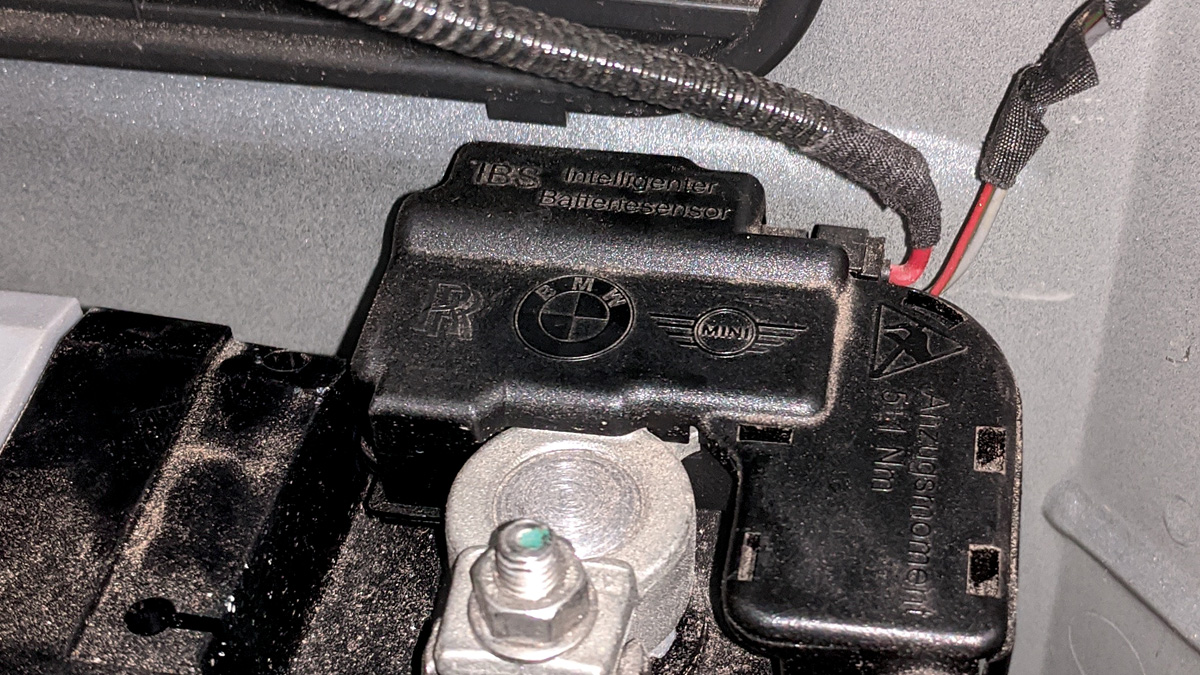
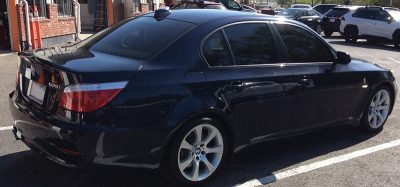
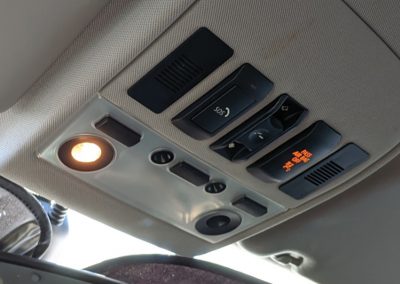
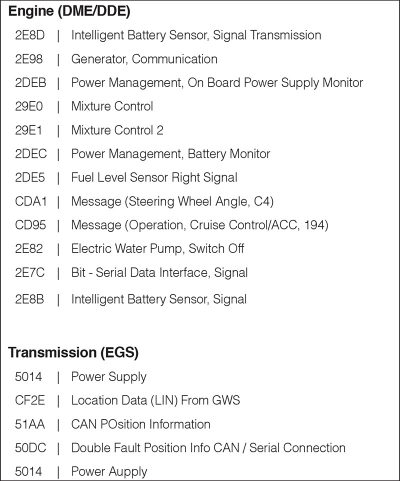
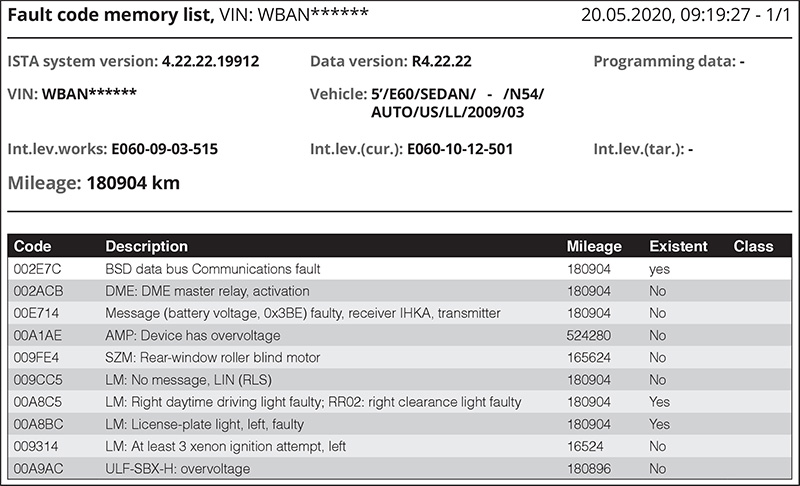
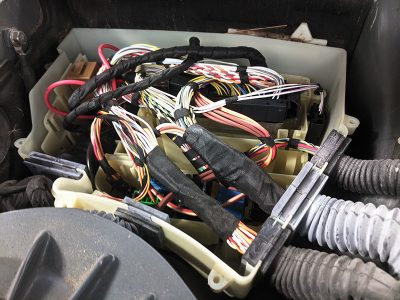
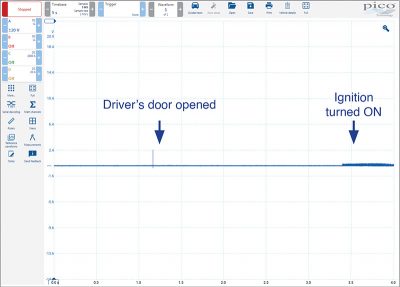
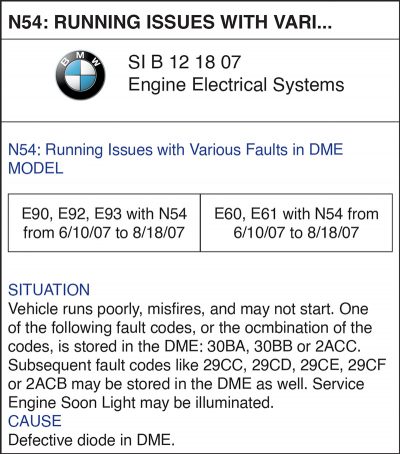

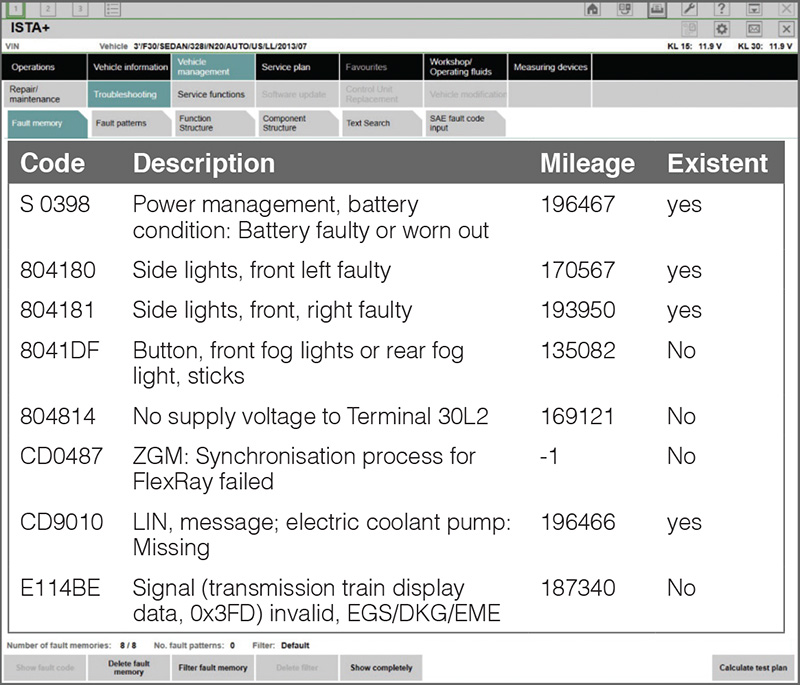
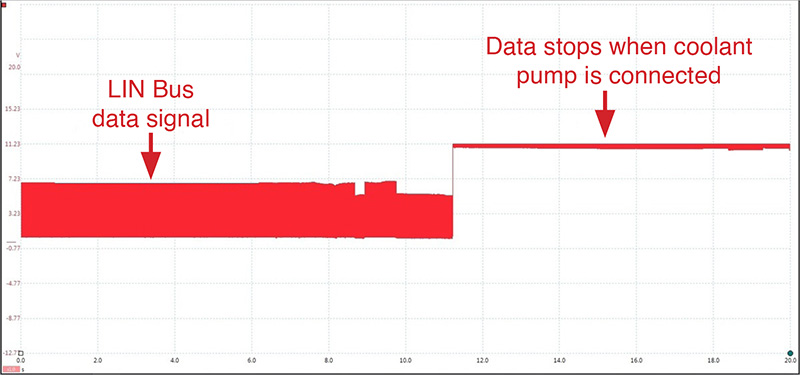




Thanks for the information thanks to this manual I repair my fault in my E60 model I had a cable cut of Lin data, of the alternator.